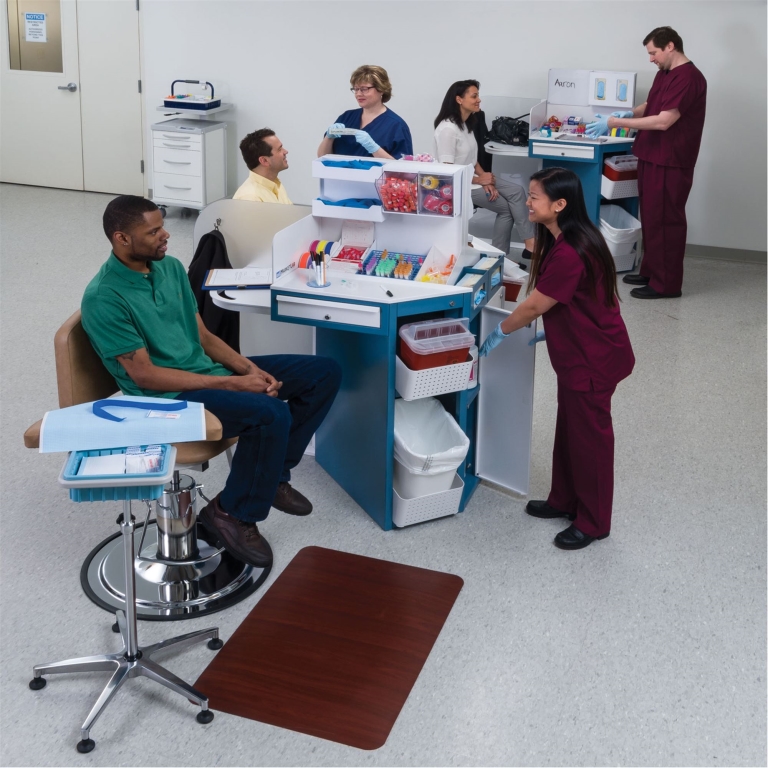What Does a phlebotomist Do? Essential Roles and Skills You Need to Know
If you’re exploring healthcare careers or need to understand more about medical professionals involved in diagnostic testing, you’ve likely encountered the term phlebotomist. But what exactly does a phlebotomist do? This vital healthcare role revolves around blood collection,patient care,and supporting diagnostic processes.In this thorough guide, we’ll delve into the responsibilities, essential skills, benefits, and practical insights into the life of a phlebotomist.
What Is a Phlebotomist?
A phlebotomist is a trained healthcare professional responsible for collecting blood samples from patients for laboratory testing, transfusions, or donations. These professionals play a critical role in medical diagnostics, helping physicians identify diseases, monitor health conditions, and determine treatment plans.
Core Roles and Responsibilities
1.Blood collection and Handling
The primary duty of a phlebotomist is to draw blood safely and efficiently. This involves:
- Preparing patients and explaining procedures
- Using sterile techniques to collect blood samples
- Labeling samples accurately
- ensuring proper storage and transportation of specimens
2. Patient Interaction and Care
Phlebotomists often serve as the first point of contact for patients. They must:
- comfort patients with needle procedures
- Address patient concerns and anxiety
- Maintain patient confidentiality
3. Laboratory Support
Along with collecting samples, phlebotomists support laboratory operations by:
- Preparing specimens for testing
- Maintaining equipment and supplies
- Follow safety protocols to prevent sample contamination
4.Record-Keeping and Documentation
Accurate documentation ensures quality control and traceability. Responsibilities include:
- Recording patient information and test orders
- Monitoring sample collection times
- Reporting issues or complications encountered during procedures
Essential Skills and Qualifications for a Phlebotomist
Educational Requirements
Most phlebotomists hold a high school diploma or equivalent. Many pursue specialized training or certification programs from accredited institutions, which enhance employment prospects and ensure competence in blood collection techniques.
Key Skills
- Attention to detail: Precise labeling and documentation prevent errors.
- Manual dexterity: Skillful handling of needles and collection devices.
- Communication skills: Comforting and explaining procedures to patients.
- Physical stamina: Standing for long periods and handling physically demanding tasks.
- Knowledge of safety protocols: Adherence to infection control standards.
Certification and Licensing
while requirements vary by state and country, earning a certification from recognized bodies such as the American society of Phlebotomy Technicians (ASPT) or National Phlebotomy Association (NPA) can boost credibility and job opportunities.
Benefits of a Career as a Phlebotomist
- Growing job opportunities: The demand for skilled phlebotomists is rising in hospitals, clinics, and diagnostic labs.
- Relatively quick training: Certification programs typically last less than a year.
- Job satisfaction: helping patients and contributing to crucial diagnostics offers a sense of purpose.
- Versatility: Possibility of working full-time,part-time,or even in mobile blood donation units.
Practical Tips for Aspiring Phlebotomists
- Gain hands-on experiance through internships or externships during your training.
- Develop excellent communication skills to manage diverse patient interactions.
- Stay updated on the latest safety and infection control protocols.
- Obtain certification from recognized agencies to enhance your employability.
- Practice patience and empathy-every patient is different.
Case Study: A Day in the Life of a Phlebotomist
Maria is a certified phlebotomist working at a busy outpatient clinic.Her typical day begins with preparing blood collection kits, verifying patient appointments, and reviewing test orders. Throughout the day, she skillfully draws blood from a wide range of patients, including children, elderly, and anxious individuals. Maria ensures each sample is accurately labeled, handles equipment safely, and provides reassurance to nervous patients. Her attention to detail and compassionate approach help streamline diagnostics, contributing significantly to patient care.
Final Thoughts
Being a phlebotomist is a rewarding healthcare profession that combines technical skills, patient interaction, and attention to detail.Whether you’re interested in a quick entry into the medical field or seeking a vital role supporting diagnostics, phlebotomy offers a promising career path. Developing the necessary skills, obtaining proper certification, and embracing the compassionate side of healthcare will set you on the right track to excel in this essential role.
Quick Reference: Phlebotomist Skills & Requirements
| Aspect | Details |
|---|---|
| Education | High school diploma + certification |
| Core Skills | Attention to detail, manual dexterity, communication |
| Certification | Preferred from ASPT or NPA |
| Work Surroundings | Hospitals, clinics, mobile units | Career growth | High demand, multiple settings |
a phlebotomist is crucial in the healthcare system, ensuring accurate blood collection and patient care. With the right skills,training,and attitude,you can thrive as a respected professional in this meaningful and dynamic field.
